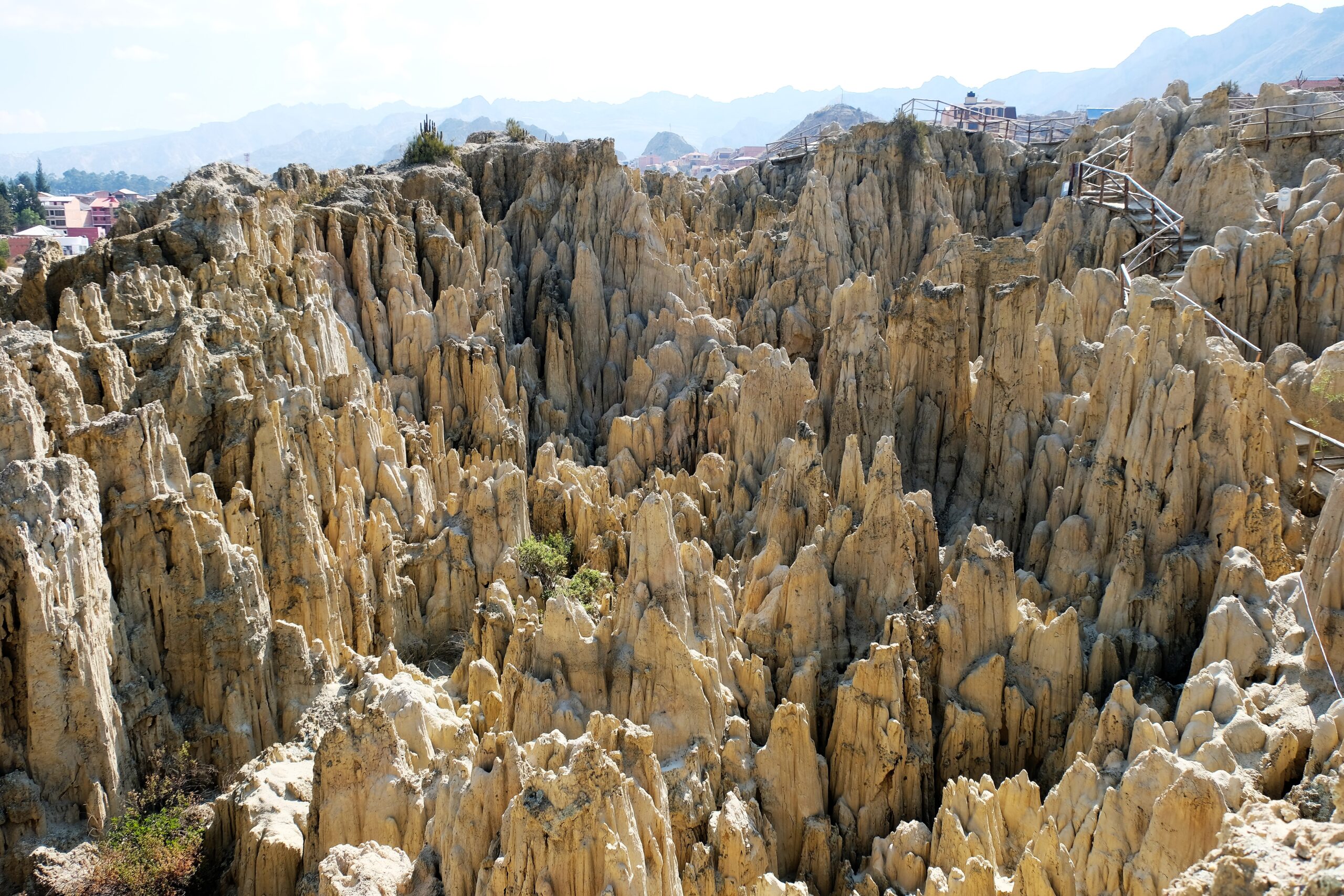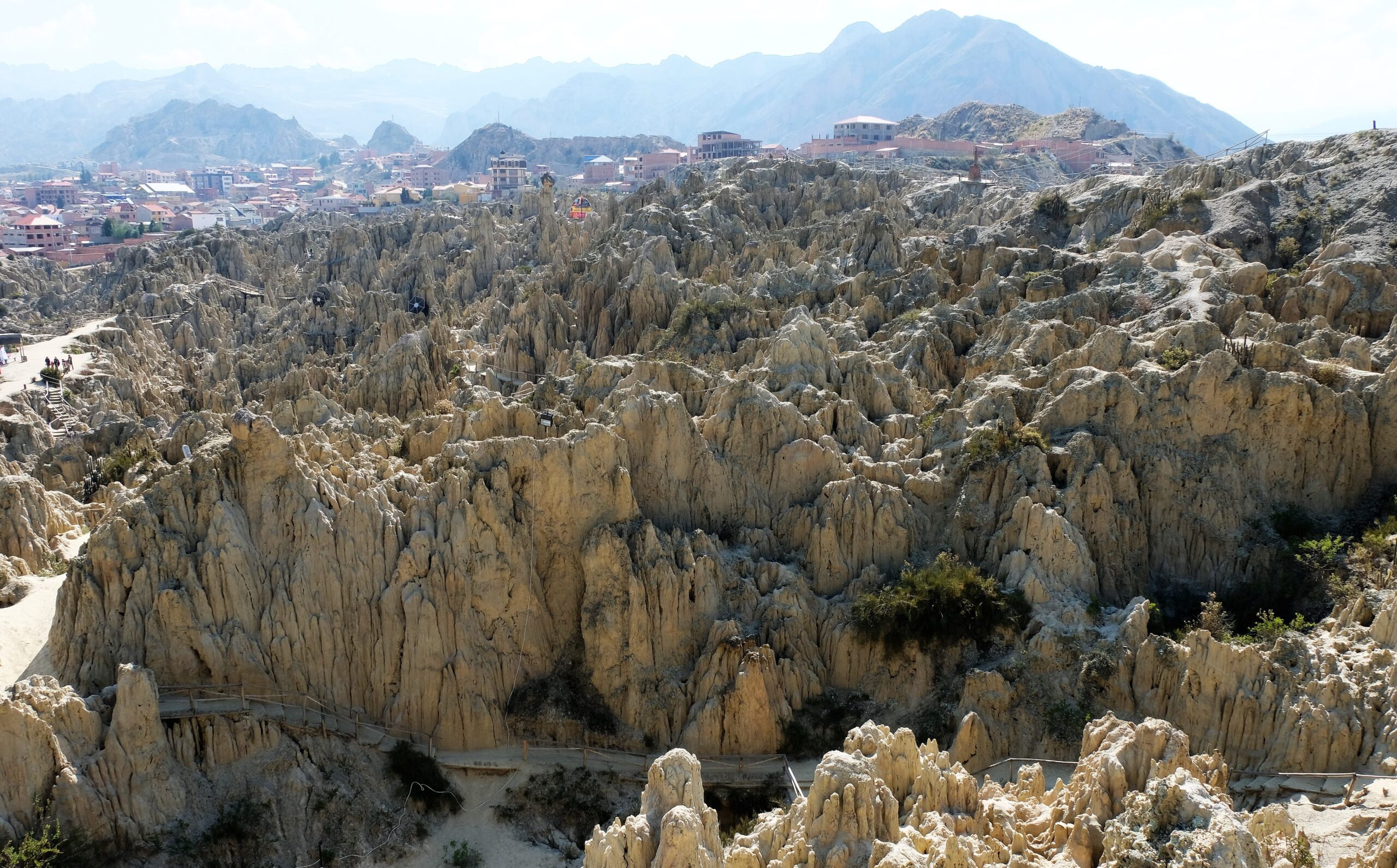Cholita Wrestling, Bolivian Chola and Moon Valley are on the cards for this post. I’ve combined them into one though I didn’t do/see them on the same day. I’ll explain later. During the previous day, I think around dinner time I met an English couple, Garry & Maddy at Cafe del Mundo. As many conversations start at the café, “do you know the wifi password?” , or something along those lines. Sometimes there was a communication glitch between the servers and patrons; the patrons not listening to the servers properly when giving out the password.
On a side note, I get very frustrated, even a little angry when watching some patrons getting irritated or shitty with servers. I mean it’s not enough that (speaking in general) most servers speak their mother tongue and another language, invariably English. Yet people still expect them to speak “their” language too. To make matters worse they get frustrated about it. I’m not painting everyone with the same brush, it doesn’t happen often, but when it does it makes my blood boil. Here in La Paz, especially Cafe del Mundo I didn’t see it, I’m sure it happens, however this area seemed to attract a different type of tourist in the majority.
Getting back on topic. The conversation expanded and Gary & Maddy and I exchanged numbers etc. This led to the first of three great outings with them. I hadn’t done any activities or travelled with other people since Julie and Mila, that was a long time ago starting in Koh Tao. I had become accustomed to doing everything by myself, I kid you not I was a little nervous doing things with other people. Very glad I did.
Cholita Wrestling
Our conversations expanded eventually leading to arrangements to do the mountain bike ride down Death Road. Before this, we (Garry & Maddy) had arranged to go see Cholita Wrestling that evening and invited me along. The price was insignificant, I really can’t remember the exact price; a quick search has tickets starting at US$7 through to US$25, the latter is a more extensive ticket with tour etc. Our ticket included picking up and dropping back off at Hotel Sagarnaga, entrance, a snack packet with popcorn, can of soda and one or two other things. Included was a brightly coloured crochet keyring in the shape of a Cholita; a cool little thing that I ended up giving to my sister-in-law.
I’ve never been a fan of wrestling like WWF or whatever it is called these days. This is similar except for two obvious differences. Firstly, it is women (yes I’m aware women do wrestle). Secondly, these women are dressed in traditional Chola wear – more about Chola shortly. Cholita Wrestling is what you make of it. If you join in on the acting and choose a side, antagonist or protagonist and commit to the show then it is a good evening. This is amateur theatre wrestling at its best and a niche wrestling at that when you include the chola dress. Wrestling in South America is big with many spectacular shows featuring household names. Cholita Wrestling is fairly new to the scene, gaining momentum about 12 years ago.

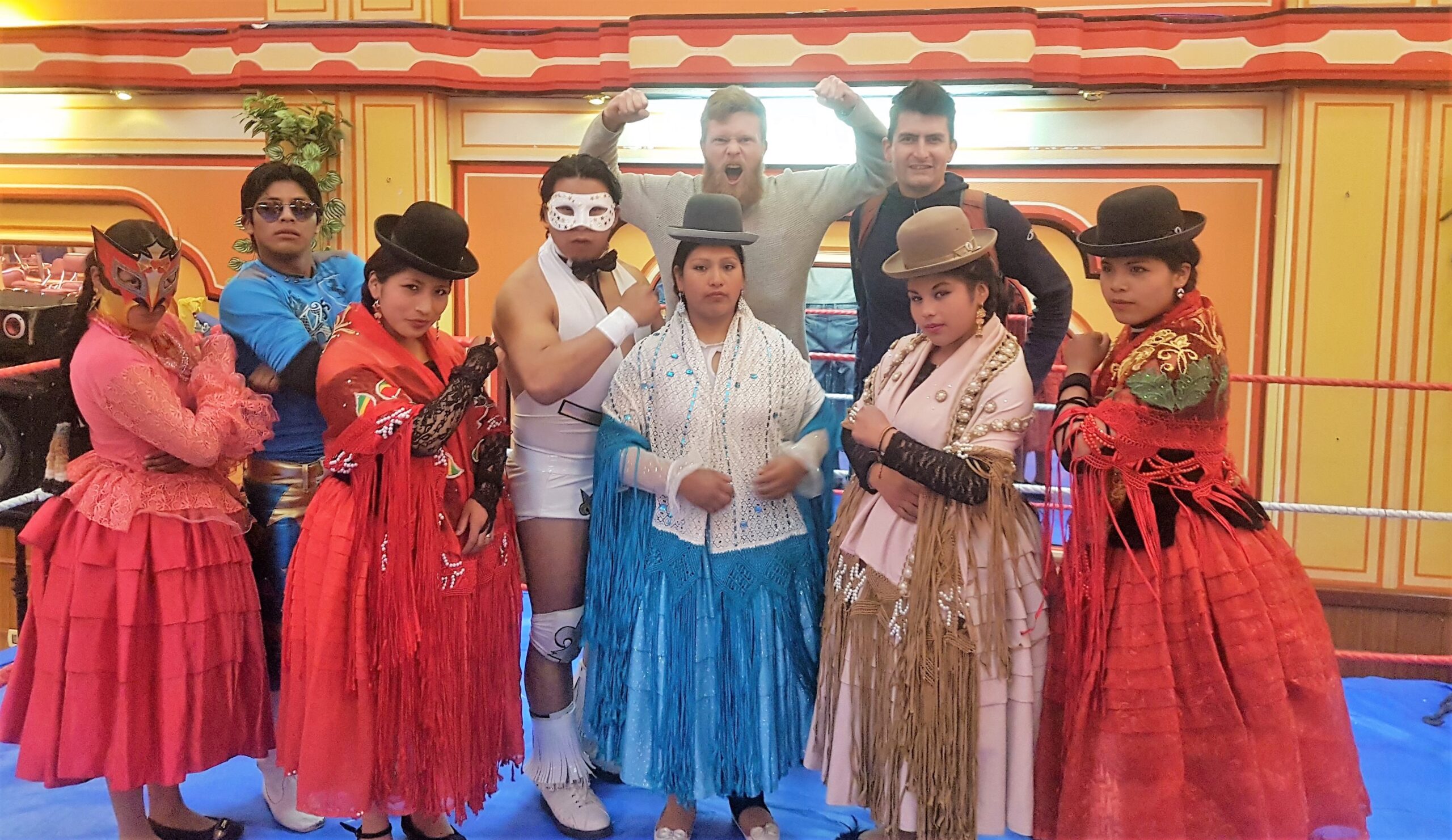
Mestizo
This is a term coined by the Spanish during their conquest of the continent referring to people of mixed Indigenous and European race. Mestizo is used on many continents with previous Spanish (mainly) influence referring to mixed Indigenous and European race. I believe the term (Mestizo) isn’t seen as derogatory but sometimes can be used so. If it is a racist or derogatory word, please let me know and I will make necessary changes immediately! The reason I’m writing about Mestizos is because there are differences throughout Bolivia yet a similarity too. Calling it traditional dress isn’t strictly true, a more accurate term would be regional mestizo dress. As a rule of thumb, the attire consists of:
- Hat – throughout Bolivia the style of hat changes, here in La Paz a bowler hat is the most common. Hats vary from wool caps, wide-brimmed hard or soft hats even berets
- Blouse or Jacket – Blouses can vary regionally regarding patterns, colours and fabric. Simpler blouses for everyday use, more intricate often with embroidery for special occasions
- Pollera / Skirt – Again there are regional difference, simpler everyday skirts and more decorative for special occasions. Lengths may vary considerably though all below the knee, at least those that I saw. What is similar is the shape. Think rockabilly style skirt and petticoat with at flared out bottom mixed with a hoop skirt. They look bulky and heavy, given extra volume by the coloured petticoat/s (called manqanchasin in some regions), exactly how many layers I don’t know but it looks to be multiples.
- Footwear – There doesn’t seem to be much consistency here, ranging from sandals, low heels, boots. What does seem consistent is leggings &/or socks no matter the footwear
- Blanket – I guess this could also be called a shawl, some are definitely blankets. Some are plane other very decorative.

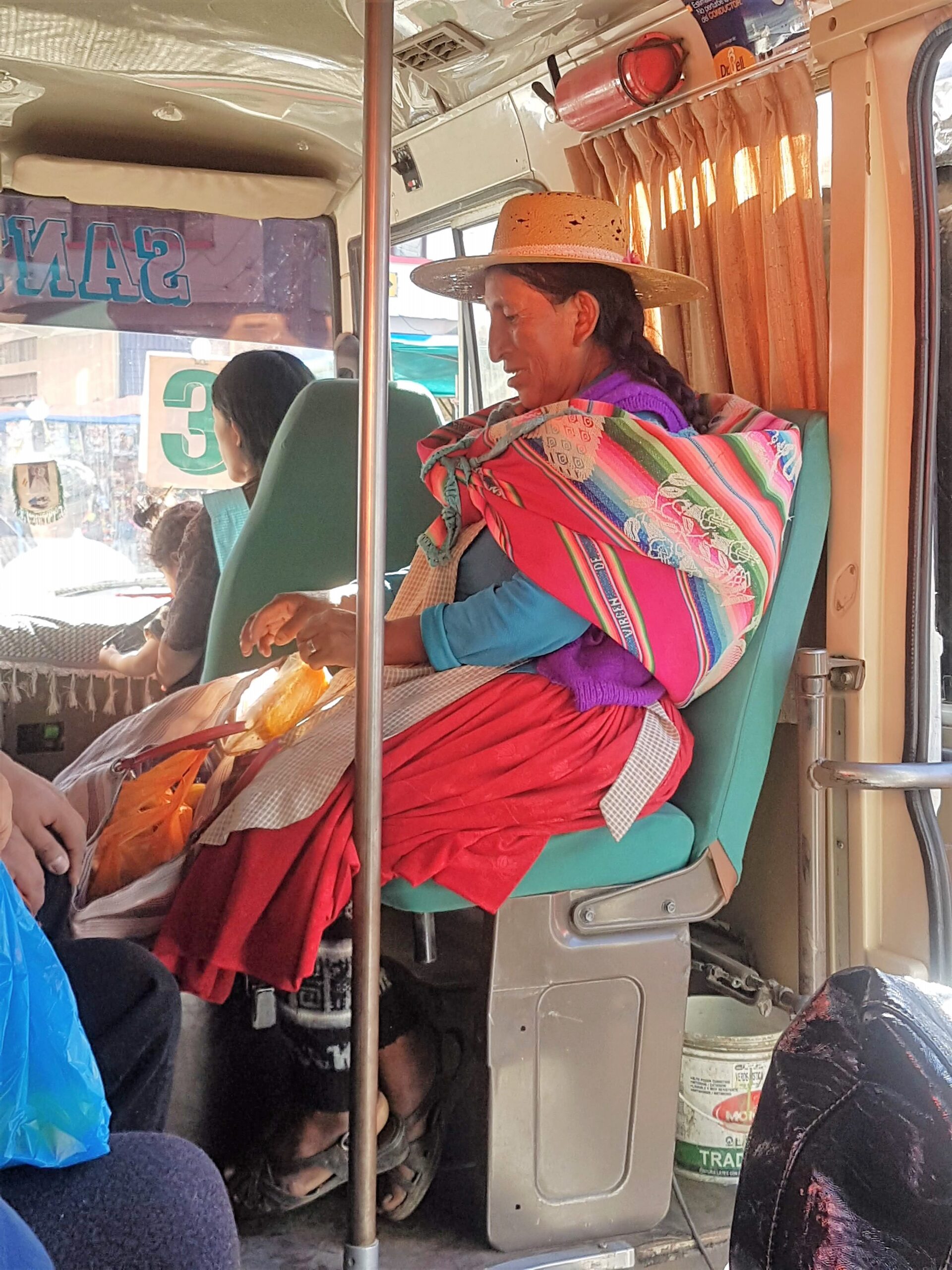
Bolivian Chola
As I’ve mentioned, throughout Bolivia and South America the Spanish gave an encompassing name to mixed race people, mestizo. In Bolivia this group of people are called Chola. Within Bolivia, Chola vary regionally in their dress. Just to be clear, it seems today Chola refers to people dressed in this unique style irrespective if they are indigenous or of mixed race. Again, I’d like to stress that I’m not using mestizo or chola as a derogatory or racist word. To be honest I can’t figure out if they are. If it is then I don’t see why they would call the wrestling Cholitas Wrestling. I’m sure as with many words/phrases it could be used negatively. One thing that was very noticeable, Bolivian Chola do seem to consist of the economically poorer demographic.
So, I’m either digging myself a hole, or this is taken purely as interesting or informational. Bolivian Chola have their regional uniqueness, La Paz is no different. Their style is referred to as Chola La Paz. Only on the very odd occasion do I take photos of people without their permission, so I don’t have that many of women in chola attire. Chola La Paz nuances are:
- Hat – Bowler style hat, with a curved short rim. It looks as if it sits on top of their heads and not on their heads. At the base of the hat is a ribbon often called a Borsalinos (I think)
- Blouse – Don’t think Chola La Paz have anything specific
- Pollera / Skirt – Materials seem to differ if they live in the city or just outside. They are long with large tucks.
- Footwear – Mostly flat shoes, a sensible option considering the roads and hills in La Paz
- Blanket – Long with wide fringes with woven macrame, they all look head and warm; La Paz can get very cold!
- Accessories – From brooches to earrings, made from gold to precious stones. Simply put they go to town from head to toe

…back to Cholita Wrestling
All the info on mestizo and Chola just to give you an understanding of why the wrestlers dress as they do. These lady wrestlers seem contradictory to the Bolivian’s reserved nature, so to with the theatre. A brightly coloured theatre with mirrors, something you would imagine to be a venue of a 70s nightclub. The wrestling is amateur theatre at best, still I would recommend going to watch like the water puppet shows in Vietnam, whilst in the area it should be on your list. It may be amateur but hats off to the ladies they do get a rigorous workout. Doing what they do wearing all those layers would be a challenge even for a fit athlete.
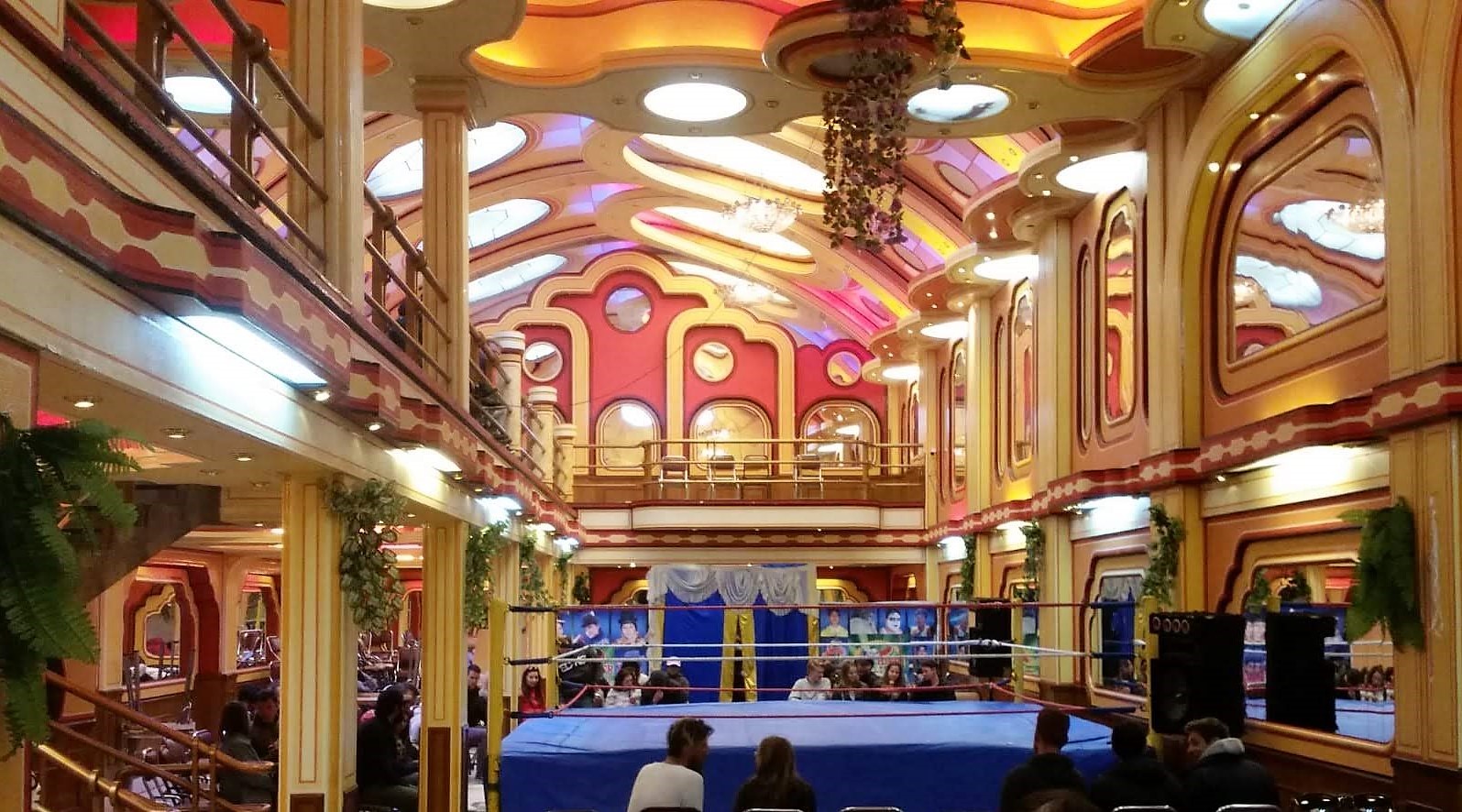
Fun evening out watching Cholita Wrestling. A unique experience in La Paz, Bolivia
Moon Valley / Valle de la Luna
Going back to how I started this post, I didn’t go to Moon Valley on the same day as the Cholita Wrestling; I visited two days after Death Road. Reason, I felt a tad tired after Death Road so took the following day off to plan my route out of La Paz. Ended up not being tired, I was at the start of some sort of illness…I’ll get into that another time. Moon Valley more commonly known as Valle de la Luna is 13km from my hotel. 13km isn’t a bad walk, but La Paz’s topography would make it feel like 30km! I took a taxi ?. Moon Valley/Valle de la Luna is what happens when less dense or harder parts of a mountain erodes away leaving an otherworldly landscape.
The area isn’t big and still manages to make an inspiring impression. These spires remind me of La Sagrada Familia towers; unnaturally long, many with bulbus tops. Their makeup is of compacted fine sand, with coarse small stones and easy to crumble by hand. No I didn’t break any, the ground is made of the same composition. Part of the Moon Valley/Valle de la Luna area has been “decorated” with spaceships and alien like stuff. They don’t enhance the area and I get the idea they were trying to achieve, sadly their displays fall a little short off the mark. I didn’t spend long there, I doubt most people would. The hour and a half I spent there was more than enough time. Moon Valley/Valle de la Luna is easy to get to so if you have the time its worth a visit, though I wouldn’t go again.

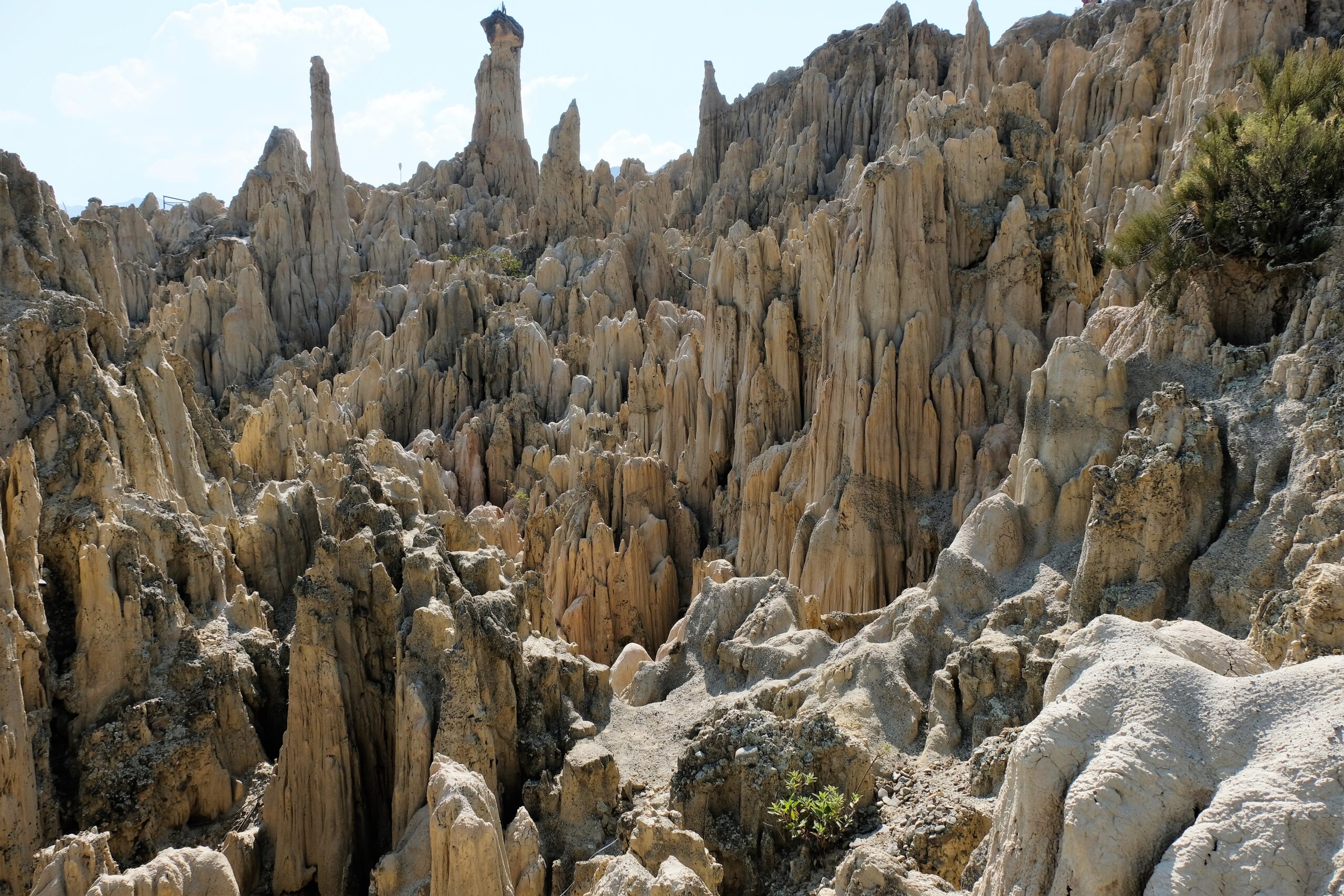
What’s next?
Well, like I said this blog isn’t in keeping with the usual of what I did each day, notably Moon Valley/Valle de la Luna. The previous day I did a mountain bike ride down Death Road. This was one of the best days I had had in ages, so that’ll be the next blog post. As usual I’ll add these and more photos on my Batnomad Facebook page.
